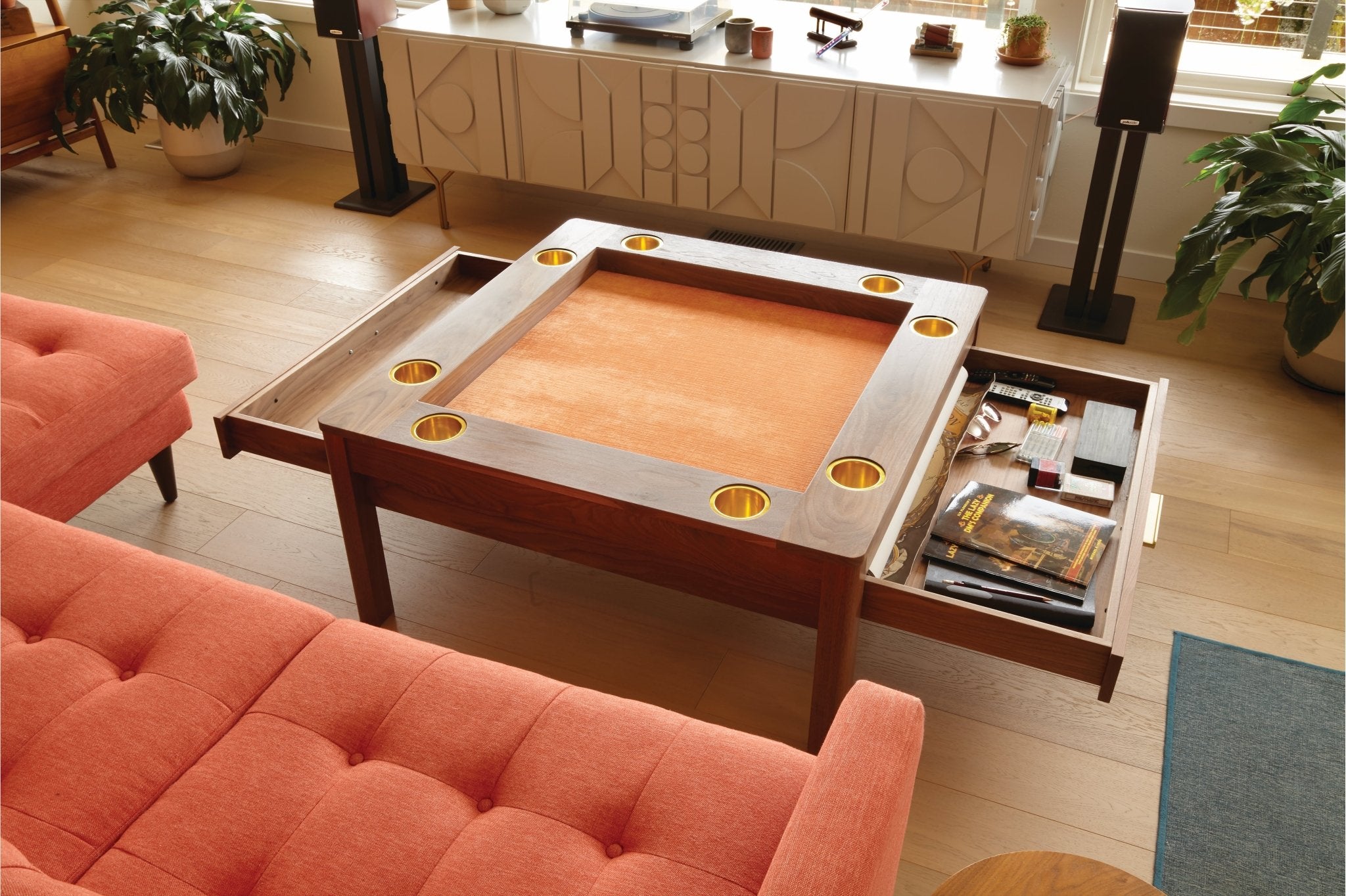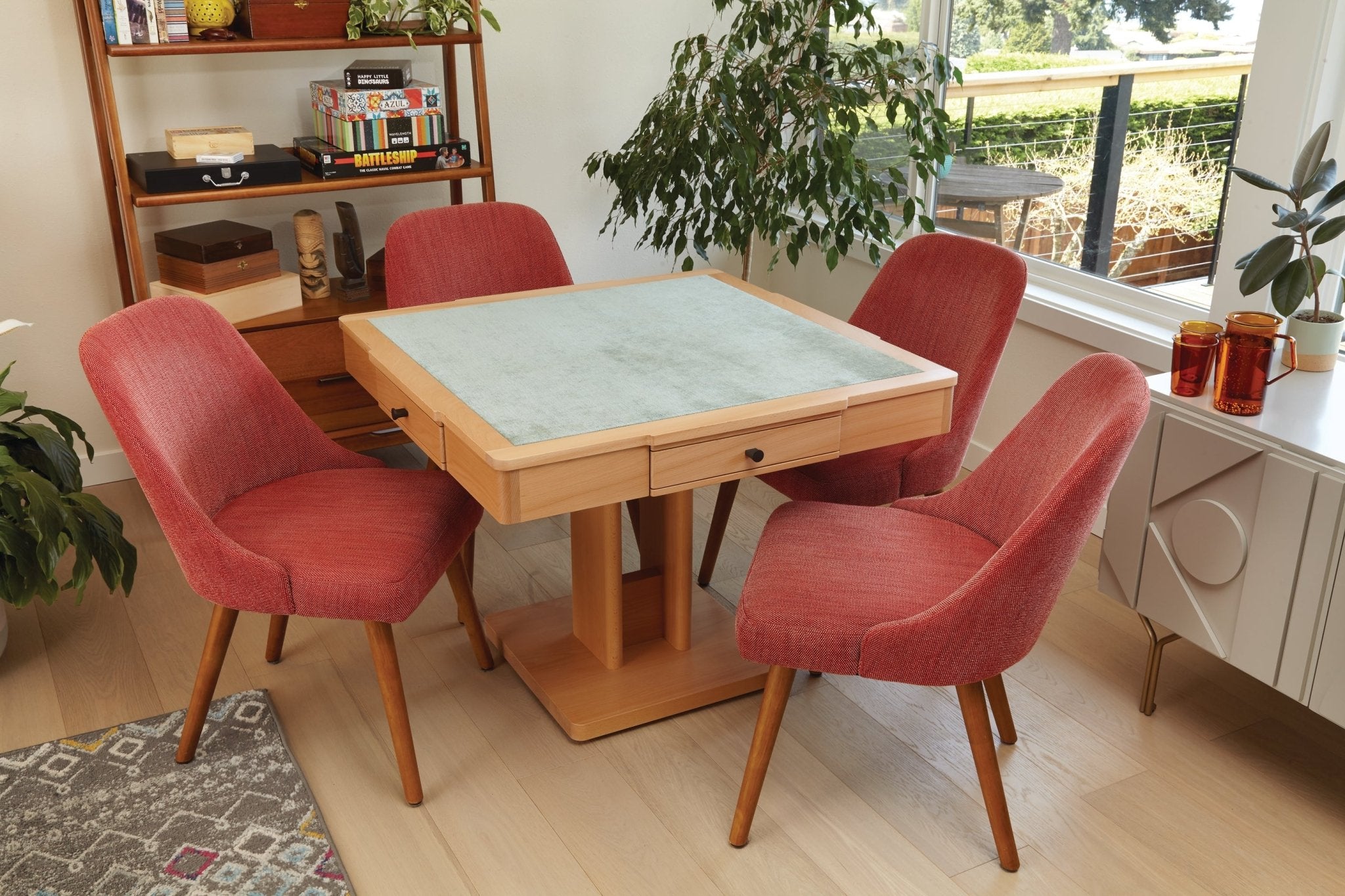Mixing Wood Tones In Your Home
Wooden furnishings are known for their sophistication and timeless look. They effortlessly add style and elegance to almost any room, so there's no wonder why they're so popular! However, creating a cohesive design using wood isn't as easy as it seems.
If you've ever tried to incorporate wooden furniture into your home, you probably already know how tricky it can be to match wood tones.
Luckily, you don't have to learn the ins and outs of interior design to master the art of mixing wood tones. Instead, you can use this easy guide to help you on your way to transforming your space. We'll teach you how to mix and match wood tones like a pro.
How To Mix Wood Tones In Your Home
There's nothing quite as striking as wooden furniture. This is especially true when your living space incorporates different types of wood and wood tones. But how do you seamlessly mix different wood tones in your home to get the look you're after? Well, there are a few different ways to approach it...
1. Identify your primary wood tone
The first step is to identify the primary wood tone within your space. This will serve as the 'anchor' for your design and help guide the selection of the rest of your wooden furniture to ensure they complement one another rather than clash.
If you have wood flooring, this will usually become the dominant wood tone. However, if you don't, large pieces of furniture like dining room tables or coffee tables will automatically become the focus. Then you can pick out the rest of your pieces based on this specific tone.
2. Embrace contrast
If you want a more striking and dynamic look that can add a lot of visual interest to your home's interior, you need to focus on contrast. This approach breaks away from the uniform, more 'matchy-matchy' style and can introduce a touch of sophistication.
Here's why contrast can be incredibly beneficial when mixing wood tones:
-
High-contrast wood tones enhance the texture and grain patterns of your wood pieces, which adds depth and dimension to the room.
-
By using contrasting tones, you can draw attention to specific pieces of wood furniture to make them the focal points of your room design. In turn, this makes the room feel cohesive without the need for decorative accents to pull the aesthetic together.
-
Contrasting wood tones make a bold statement and immediately catch the eye, making for a more visually appealing living space.
3. Introduce some variety
When you're designing with wood, pairing perfectly matched wood tones can often lead to a flat or monotonous appearance - especially in smaller spaces like dining room/living room combos. So, instead, you're going to want to embrace a variety of wood tones. That way, you can create a richer and more engaging space.
Try mixing light, medium, and dark wood tones for the perfect contrast. Stained woods can also work well when paired with more natural wood textures, so don't be afraid to get creative!
4. Break up the monotony
If you're planning on using wood tones that are similar or have similar undertones, then you may want to break up the monotony. Otherwise, your space may end up looking bland and boring. For example, if your wood pieces match your wooden flooring, it can ruin the atmosphere of the room.
To help add some interest to your interior and avoid everything looking the same, you can incorporate features like specific wall paint colors or even add a rug as a 'palette cleanser'. Rugs are fantastic additions to spaces like living or dining rooms since they can add texture. Additionally, a plush rug can soften the harshness of darker wood tones, making the room more inviting.
5. Vary the shapes and sizes of your furniture pieces
If you're working with similar wood tones, changing up the size and shape of your furniture is really important. This helps to prevent your space from becoming visually monotonous and instead creates a more dynamic feel.
This is particularly important if you have several pieces with the same wood tone, since it can easily create a uniform look. However, by using different shapes and sizes in your furniture, you're essentially creating enough variation to make the space more aesthetically pleasing (without having to buy all new furniture).
It's also important to remember that choosing different furniture shapes and sizes can improve the functionality of your space. In apartments or small homes, this can be a lifesaver!
6. Add texture
Mixing wood tones isn't only about finding wood colors that complement one another. It's also about finding textures and similar grains that pair well. A good example of textured wood may include furnishings made from rattan, cane, wicker, or bamboo.
One of the best things about incorporating some texture into your space is that it can give the room a warmer, more cozy atmosphere. This is thanks to the natural and organic quality of textured wood since it feels more earthy and casual.
Additionally, when you pair it with the polished look of other wooden furniture, it can create dimension and a good amount of contrast. For example, if you have a sleek wooden coffee table in your living room, you can pair it with a wicker light fixture or bamboo side table.
FAQs
How do I mix wood tones in a small space without making it look cluttered?
Mixing wood tones in a smaller living space can be tricky, but it's definitely achievable when you use the right techniques. For example, you can start by choosing one primary wood color and stick to a color palette. Additionally, instead of mixing different wood colors, try mixing up the textures. This can add depth and interest without making your room look chaotic or overwhelming.
It may also be a good idea to minimize the amount of wooden furniture in your home by incorporating multi-functional pieces. For example, a well-designed board game table can double as either a dining or coffee table while taking up minimal space.
It's important to remember that there are also different types of game tables, so be sure to pick one that suits your needs best by comparing tables. For instance, the Dresden, the Mimosa, and the Firefly are all ideal pieces that serve multiple functionalities.
What are the best wood tone combinations?
The best wood-tone combos will depend on your design preferences and the overall look you're going for. It will also depend on whether you want to mix and match furniture, or if you'd like to create a more cohesive look. Still, some popular (and super effective) combinations for matching wood tones include:
-
Light and dark wood: Pairing light tones like oak or maple with darker tones like mahogany.
-
Warm tones and cool tones: Combining warm woods like cherry with cooler tones like driftwood or ash.
-
Neutral and bold: Neutral wood tones like beech can be perfectly combined with bolder wood tones like ebony.
-
Mixed shades of one color: Sticking to various shades of the same wood tone is an easy way to create simple contrast, such as using different shades of brown or gray.
Final Thoughts
Mixing wood tones can be a challenging (yet super rewarding) interior design challenge. But once you have the basic principles of how to match wood tones, you won't have to worry about your space looking mismatched - or too well-matched and boring.
Using our easy guide and how-to steps, you're already on your way to turning your home from drab to fab. Just remember: Don't be afraid to experiment, add texture, introduce some contrast, and (most importantly) have fun with it.



